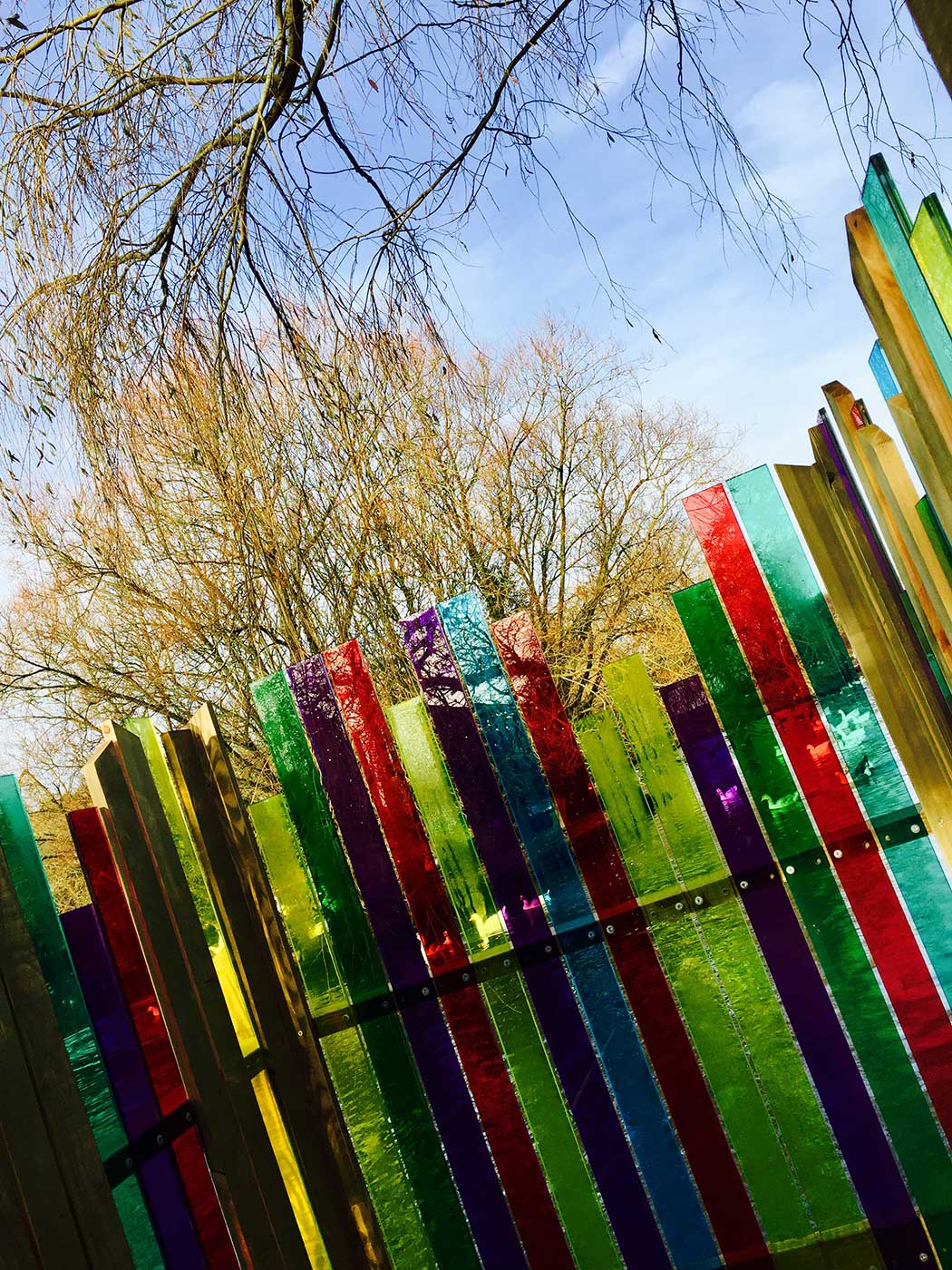Whats behind the Rainbow Bridge?
Bifrost (pronounced roughly “BEEF-roast;” Old Norse Bifröst) is the rainbow bridge that connects Asgard, the world of the Aesir tribe of gods, with Midgard, the world of humanity. Bifrost is guarded by the ever-vigilant god Heimdall.
The actual meaning of the word is uncertain. The original form of the name seems to be Bilröst, which suggests a meaning along the lines of “the fleetingly glimpsed rainbow.” If Bifröst is correct, however, the meaning would be something akin to “the shaking or trembling rainbow.” In either case, the word points to the ephemeral and fragile nature of the bridge.
Other interpretations suggest that Bifröst may mean "shimmering path" (see Andy Orchard). He notes that the first element of Bilröst—bil (meaning "a moment")—"suggests the fleeting nature of the rainbow," which he connects to the first element of Bifröst—the Old Norse verb bifa (meaning "to shimmer" or "to shake")—noting that the element evokes notions of the "lustrous sheen" of the bridge. Austrian Germanist Rudolf Simek says that Bifröst either means "the swaying road to heaven" (also citing bifa) or, if Bilröst is the original form of the two (which Simek says is likely), "the fleetingly glimpsed rainbow" (possibly connected to bil, perhaps meaning "moment, weak point").
The story continues ... that the bridge consists of three colours, has great strength, "and is built with art and skill to a greater extent than other constructions."
Looking through the glass at the water beyond.
The journey begins at a simple crossing from the path past the "guardian" of the bridge, "Liberty", to a wooden structure which then begins to introduce lights through the glass animal souls. At the end of the journey you are surrounded by light and colour and can view the world through rainbow colours. As you look at the water, the ducks and leaves beyond they project a moving image as if they are part of a stained glass window that is animated. In certain lights the colours are projected onto the wood of the bridge, the water and the passing ducks and geese which allow you to view the living things in a new light.
Engagement - remembrance
The space is a quiet space and is intended to be a space of contemplation. The animal souls are brought to life by the memories of our animal friends who have passed. This offers Raystede an opportunity to provide their visitors a way of making this space their own. The animal souls are made by artist Louise Durham and if a visitor wants to remember their pets they can buy a disc which can then be placed onto the bridge with a remembrance plaque around it. This personalises the space and yet with colour and light will be a place of inspiration.
The glass animal souls reflect the surroundings.
Engagement - education
Taking children onto the bridge allows Raystede to shops a different view of the animals by the different view points through colour and glass. Children could be brought to the space on darker days with torches so they can shine their lights through the glass and the animal souls. This becomes a great place to discuss and explain death and mortality.
Engagement - inspiration
This space can also provide a place for creative writing, poetry and art. Haiku in particular would be the ideal form of poetry to introduce here as the rules of Haiku lend itself to the space.
Seeing the world through glass allows a different perspective on the world.
Haiku - definition
The essence of haiku is "cutting" (kiru). This is often represented by the juxtaposition of two images or ideas and a kireji ("cutting word") between them, a kind of verbal punctuation mark which signals the moment of separation and colours the manner in which the juxtaposed elements are related.
As colour and light
Shimmer on rippling water
I remember spring
































